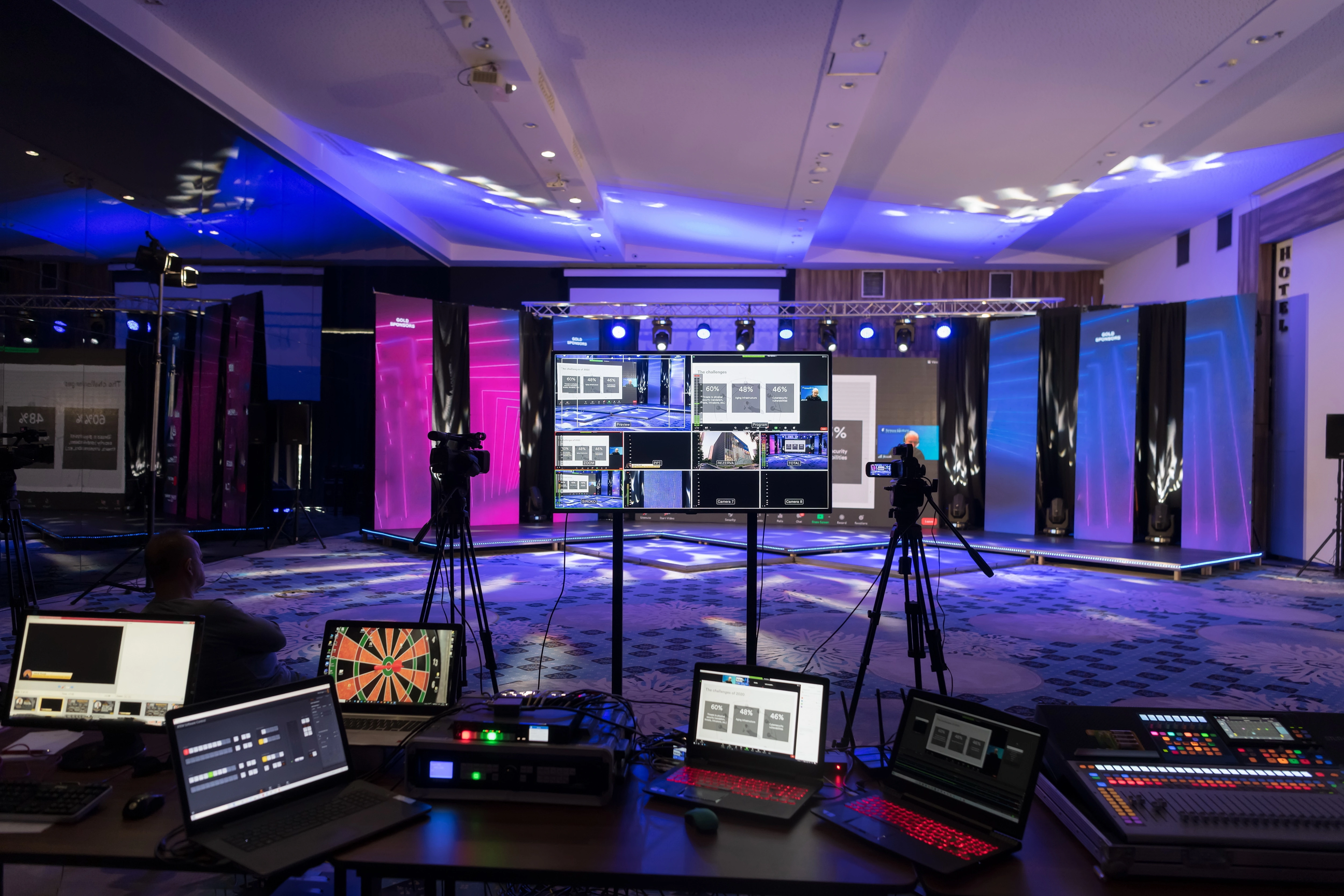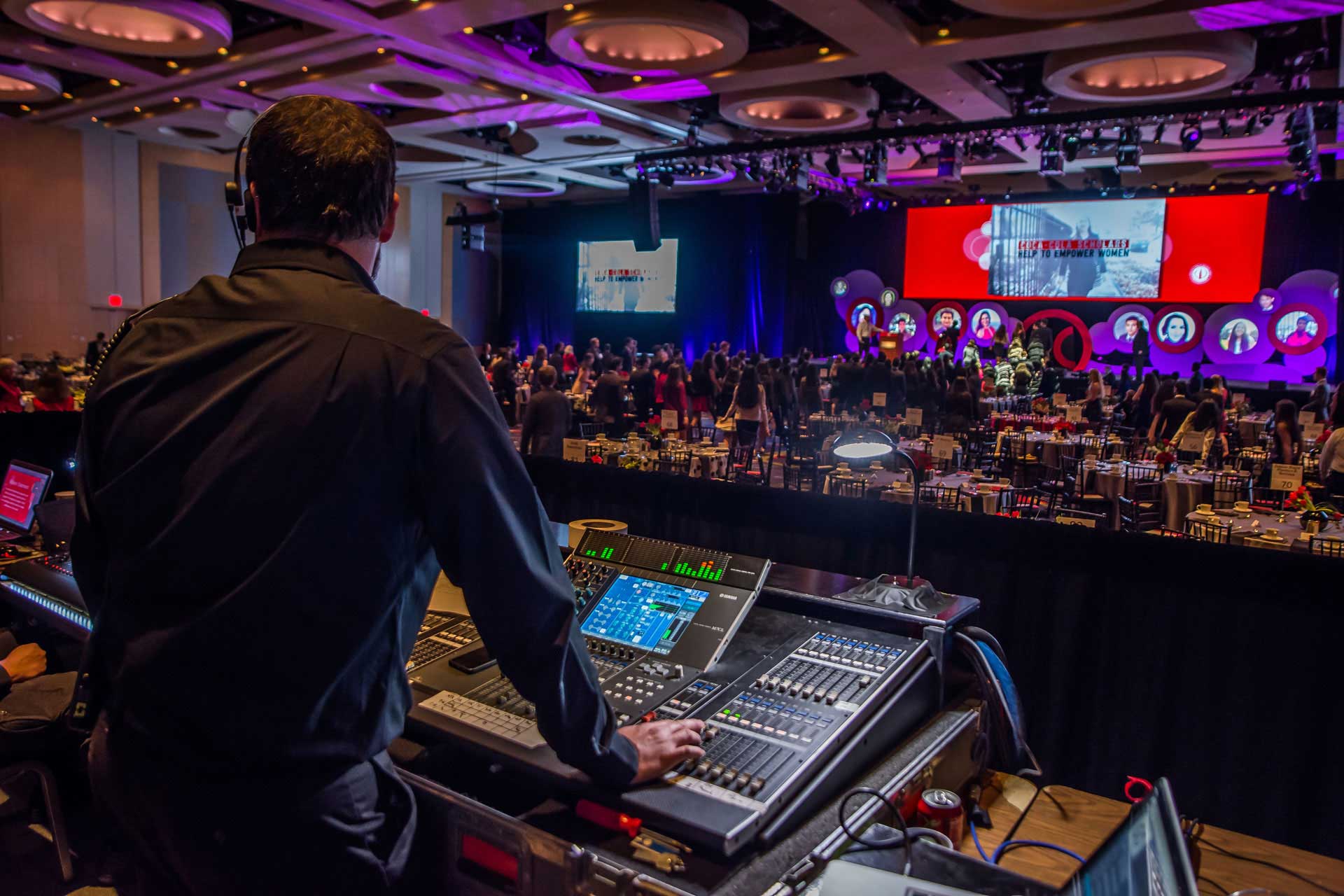Optimizing Interaction Using Live Event Audio Visual Production Approaches
Optimizing Interaction Using Live Event Audio Visual Production Approaches
Blog Article
Understanding the Process of Live Event Audio Visual Production
The intricacies of real-time occasion sound visual manufacturing demand a mix of technological expertise and calculated planning. Each phase, from the preliminary concept to the final execution, calls for a joint initiative among different experts, including audio designers and lighting designers. Understanding the functions and responsibilities within this ecological community is crucial for accomplishing a seamless experience. As we check out the important components that add to a successful occasion, it ends up being noticeable that the foundation hinges on both prep work and adaptability. What takes place when unexpected difficulties emerge, and just how do they reshape the production landscape?
The Significance of Preparation
Effective planning is vital for the success of any live event sound visual production. A well-structured strategy offers as the structure, directing every facet of the event from fertilization to execution.
Furthermore, careful scheduling is critical. An extensive timeline that includes due dates for each stage of manufacturing helps to minimize prospective threats and makes sure that all elements are addressed in a timely fashion. Moreover, reliable source allowance is extremely important; this consists of not just the human resources however additionally the budget plan, location, and products required for the occasion.
Ultimately, thorough planning not only boosts the quality of the audio aesthetic experience but also infuses confidence amongst the group and stakeholders, leading to a effective and seamless occasion. Without this structure, also the most cutting-edge concepts can fail, emphasizing the obvious relevance of preparation in real-time occasion sound aesthetic manufacturing.

Trick Tools and Innovation
An effective online event sound visual production depends heavily on the appropriate devices and technology to bring the vision to life. Essential elements include stereos, visual screens, lights, and control systems, each playing an essential role in making certain a seamless experience.
Audio systems are composed of microphones, speakers, and mixers that promote clear noise delivery. Top quality microphones catch vocals and instruments accurately, while mixers enable for real-time audio modifications based upon the event's characteristics. Visual display screens, consisting of projectors and LED screens, are vital for sharing info and boosting audience engagement. The option of display technology can dramatically influence the general visual and efficiency of the presentation.
Lighting tools is one more important component, as it establishes the state of mind and highlights key minutes during the event. Options range from stage lights to intelligent lighting systems that can be programmed for certain impacts. Control systems incorporate sound, aesthetic, and lights components, guaranteeing cohesive procedure throughout the manufacturing.
Purchasing reliable equipment and understanding the most current technical advancements can significantly boost the high quality and effect of real-time event sound aesthetic productions, inevitably adding to an unforgettable target market experience. Live Event Audio Visual Production.
Roles and Responsibilities
Successful live event audio visual production requires a distinct framework of functions and responsibilities among group participants. Each function is essential to guarantee smooth operations and attain the wanted result.
The audio engineer is responsible for managing sound top blog quality, consisting of microphone positioning, sound blending, and guaranteeing that all audio elements are synchronized with visual material. The illumination developer produces an atmosphere that boosts the occasion's mood, choosing suitable components and programs lighting hints to complement the efficiency or discussion.
A video service technician manages all visual elements, including cam operation, video clip switching, and estimate management. They function closely with the supervisor, who coordinates the total production, making real-time choices to guarantee that the event streams flawlessly.
Producers manage budgeting and organizing, ensuring that all aspects of the event line up with the customer's vision. This collaborative structure allows an effective audio aesthetic production, aligning each member's proficiency towards a merged objective.
Implementation and Live Production
Carrying out a live occasion needs meticulous preparation and real-time versatility to ensure all components come together flawlessly. Each group should be aligned with the occasion's vision while maintaining clear interaction to deal with any kind of unanticipated challenges that emerge during the occasion.

The manufacturing group need to stay cautious, adjusting to target market reactions and feedback. Inevitably, effective implementation finishes in a cohesive real-time occasion that mesmerizes the audience and meets the client's purposes.
Post-Event Evaluation and Responses
Complying with the conclusion of a real-time event, performing a thorough post-event analysis is essential for recognizing strengths and areas for renovation. This evaluation process should involve gathering feedback from various stakeholders, consisting of guests, occasion team, and customers (Live Event Audio Visual Production). By using studies, interviews, and casual conversations, organizers can get valuable insights right into the overall experience and efficiency of the audiovisual manufacturing
Examining technological elements such as audio quality, aesthetic clarity, and tools dependability is important. Additionally, assessing the control between the manufacturing group and various other divisions helps to pinpoint logistical obstacles and successes. Identifying any concerns experienced during the event allows teams to establish approaches for reducing comparable problems in future manufacturings.
Additionally, assembling and reviewing comments facilitates the acknowledgment of standout aspects, such as seamless shifts or interesting presentations, which my explanation can be highlighted in future events. The post-event examination not just supplies a roadmap for enhancement yet additionally fosters a culture of constant discovering within the group. Ultimately, this reflective method improves the top quality of future real-time events, guaranteeing that they go beyond or meet audience assumptions and provide a remarkable experience.
Final Thought
In final thought, effective real-time occasion audio aesthetic use this link manufacturing demands comprehensive preparation, knowledgeable coordination among diverse roles, and the assimilation of innovative innovation. Ultimately, a well-executed sound visual strategy significantly boosts audience engagement and contributes to the total success of real-time events.
The complexities of real-time occasion sound visual production demand a mix of technological know-how and strategic planning.Effective planning is vital for the success of any kind of live occasion sound visual production. Without this structure, even the most ingenious concepts can fail, underscoring the obvious value of preparation in live event audio visual manufacturing.
Each team should be aligned with the event's vision while keeping clear communication to address any type of unanticipated obstacles that arise during the occasion.
In verdict, reliable real-time occasion sound aesthetic manufacturing requires thorough preparation, competent control amongst diverse roles, and the integration of advanced technology.
Report this page